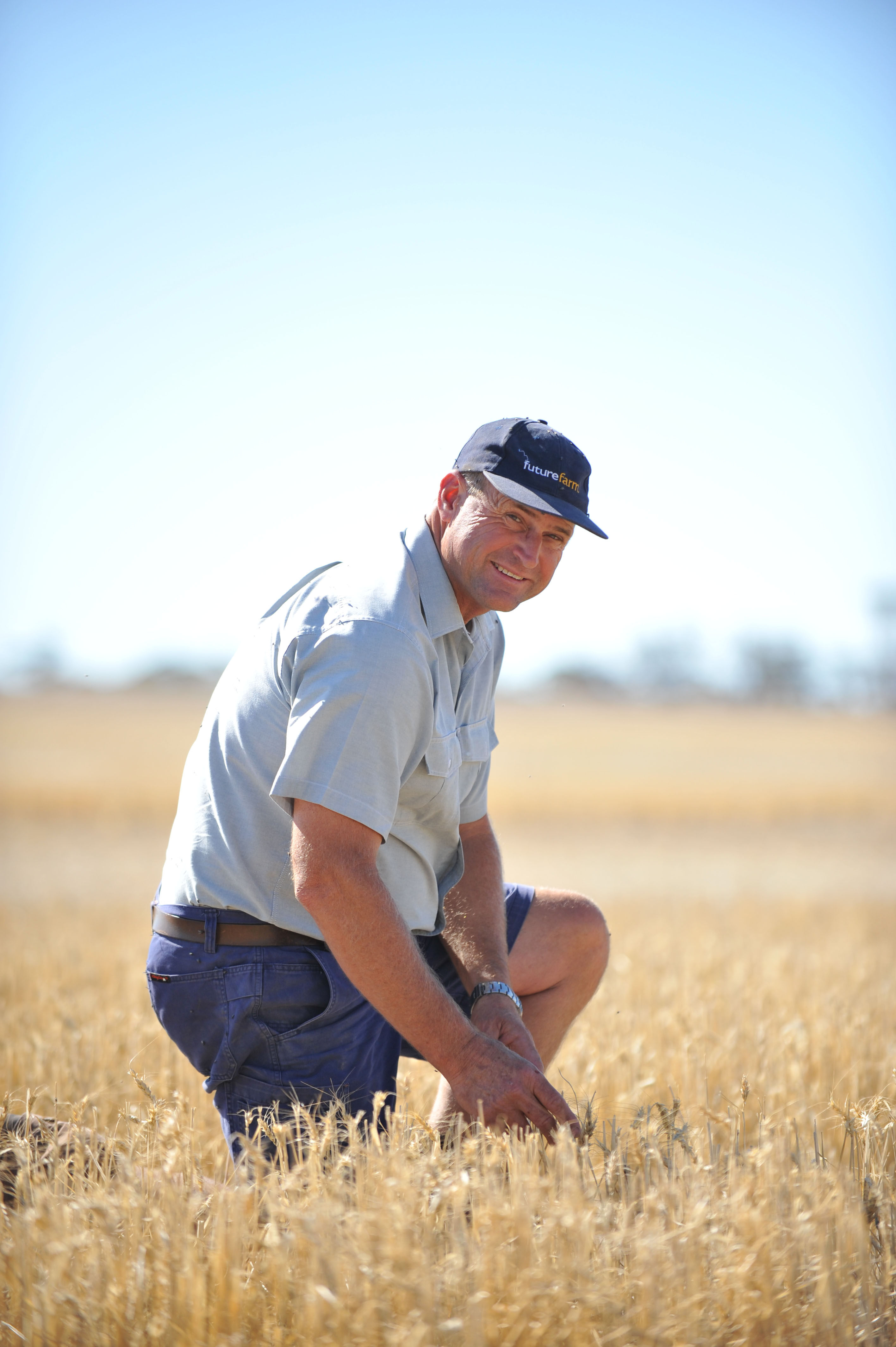
Like most other Wheatbelt farmers, Cunderdin’s Chris Syme has embraced no-tillage cropping. The practice of minimal disturbance of the soil during seeding was probably the biggest change to broadacre farming during the 1980’s and 90’s. But this change has led to an increased reliance on herbicides, and difficulty controlling weeds in stubble. It’s a problem Chris Syme is faced with each summer, and has become the motivation behind a new project being funded by Wheatbelt NRM. The natural resource management group has teamed up with the WA No-Tillage Farmers Association (WANTFA) and will this year run a series of trials on Chris Syme’s farm in Cunderdin. Wheatbelt NRM’s David Grasby said stubble played a valuable role in holding together precious top soil and increasing levels of organic matter. “Each year, substantial amounts of top soil is lost in the WA Wheatbelt, “ David Grasby said. “Retaining stubble helps to improve the health of our soils, which has become a key focus for us because it’s been proven to help cut wind erosion. “We’re hoping research trials like the one in Cunderdin will go some way to reducing the wind erosion events that farmers in the Wheatbelt experience each summer.” WANTFA’s David Minkey said he’d received a directive last year from his board, to try and find ways to overcome barriers to stubble retention. “One of the biggest problems is trying to get your herbicides to work in stubble, because they get intercepted before they reach the ground,” David Minkey said. “Pre-emergent herbicides can’t hit the soil, which is leading to more farmers burning their stubble to allow herbicides to penetrate onto the surface and to cut the weed seed bank. “This goes against the principle of no-till, because you are destroying valuable organic matter.” David Minkey said some work had already been done with the Facey Group at Wickepin and at the Esperence Downs Research Station. “There is a belief out there that increased droplet size and using high water volumes helps improve penetration of chemicals into the soil,” David Minkey said. “What we found at last year’s initial trials was that the chemical was more effective with higher volumes of water, but not necessarily with bigger droplets. “We hope to come out of this two year trial with a recommendation for farmers on how to get an effective herbicide application in stubble. “This involves investigating the architecture of the stubble including short versus tall stubble, and the best water volumes.” The trials will also use higher doses of pre-emergents including Trifluralin, Boxer Gold and Sakura. Wheatbelt NRM’s David Grasby said between 80 to 90 per cent of farmers in the WA Wheatbelt had now embraced no-till farming practices. “But not all of them retain stubble every year, which we think is an essential part of a sustainable farming system,” David Grasby said. “If you can go some way to solving the problem of applying pre-emergent herbicides to stubble paddocks pre-seeding, then we may see more stubble retained.”

